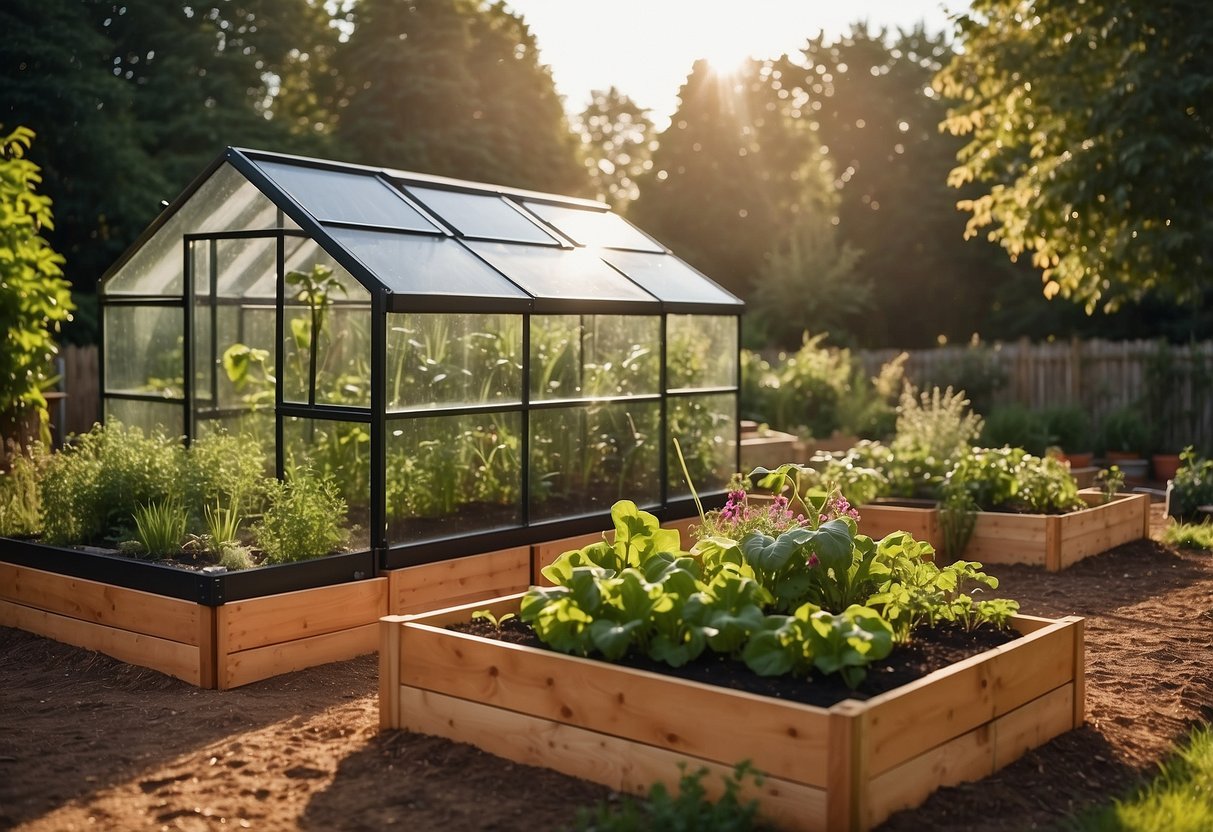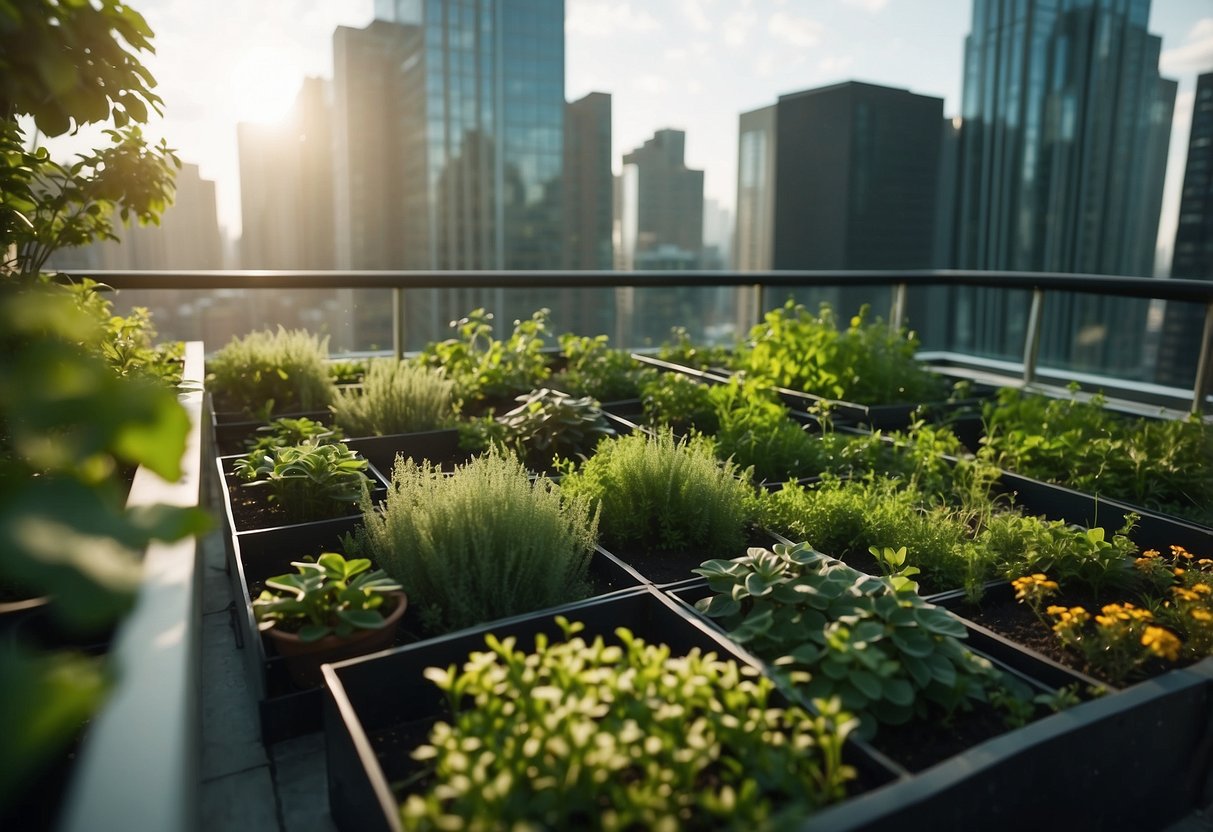Economic Garden Ideas: Creative Tips for Budget-Friendly Landscaping
Creating a beautiful garden doesn’t have to break the bank. By exploring economic garden ideas, you can transform your outdoor space into a lush and inviting retreat without spending a fortune. Learn how to maximize your garden’s potential with simple, cost-effective solutions.

Whether you’re working with a large yard or a compact balcony, there are plenty of budget-friendly tips to help you design a stunning garden. From repurposing old items to clever planting techniques, you can achieve a gorgeous garden that you can be proud of.
1) Companion Planting

Companion planting is a great way to boost your garden’s health and productivity. Certain plants grow better together, offering mutual benefits.
For instance, tall plants like corn can provide much-needed shade for crops like lettuce. Similarly, beans can enrich the soil by adding nitrogen, making it more fertile.
This method can also help reduce pests. Some plants attract beneficial insects that keep harmful bugs away, making your garden healthier and more vibrant. By grouping the right plants together, you can create a more balanced and efficient garden space.
Learn more about the benefits from this companion planting guide.
2) Raised Beds

Raised beds are a great way to start an economic garden. They help you grow plants in a controlled environment and can be very budget-friendly.
You can make a simple raised bed using untreated wood and corner braces. This design is sturdy and perfect for various plants like carrots, garlic, and even rhubarb.
Using materials like galvanized troughs can also be a smart choice. They give your garden a rustic look and are easy to set up. For more ideas, check out these DIY raised garden bed ideas.
3) Vertical Gardening

Vertical gardening is a great way to use space wisely, especially if you have a small yard. You can start by attaching planters to a wall or fence to create a beautiful gardening space.
Another idea is to use a trellis panel to support pots with herbs, vegetables, and flowers. This adds color and greenery to any wall.
Consider making a Strawberry Tower Garden using leftover materials. It’s simple and perfect for small patios or decks. Vertical gardening keeps plants off the ground, making harvesting easier and saving your back and knees.
4) Herb Spirals

Herb spirals are a clever way to grow multiple herbs in a small area. They use a spiral design to create various microclimates. This means you can grow plants with different sun and water needs close together.
To build one, you’ll need materials like stones or bricks to form the spiral shape. It’s best to start at ground level and spiral up to about three or four feet high. Materials like gravel or rubble can fill gaps.
An herb spiral maximizes space and looks great. It’s a perfect addition to any garden and offers easy access to your favorite herbs. For more details on construction, check out this guide.
5) Aquaponics System

An aquaponics system uses fish and plants together to create a mini ecosystem. Fish waste provides nutrients for the plants, while the plants help clean the water for the fish.
One popular idea is the Easy IKEA-hack Indoor Aquaponics System, which uses wire baskets and is great for small spaces. Another option is the cost-effective $99 System, perfect for outdoor settings and simple to build.
Using materials like plastic bins, PVC pipes, and a submersible pump can help you create an effective system with minimal maintenance.
6) Rain Gardens

Rain gardens are not only beautiful, but they help manage water runoff. You can create a serene space by including natural elements like smooth rocks and water-loving plants.
Try adding small ponds to filter rainwater. Channels can move the water through different rain beds.
For a focal point, you could include a footbridge or unique planting beds.
7) No-Dig Gardens

No-dig gardens are perfect if you want to save time and effort. Instead of tilling the soil, you create layers of organic matter on top. This means less work for you and healthier soil.
You don’t need to worry about weeds much. Adding mulch, like compost or straw, helps keep them at bay. Plus, earthworms do the tilling for you, improving the soil’s quality.
Starting is easy. First, mow the area using the lowest setting on your lawn mower. Then, cover with cardboard or newspaper before adding layers of compost and mulch. Your back will thank you!
For more details, check out No-Dig Gardening 101 and The No-Dig Garden Method.
8) Green Roofs

Green roofs are a great way to combine gardening and sustainability. They involve covering a building’s roof with vegetation. This can help reduce your energy costs and provide insulation.
Adding a green roof to your home can transform your space. It’s a habitat for wildlife and can be very self-sustaining.
You can start with simple plants like sedum or Meadow Saxifrage, which grow well in full sun and well-draining soil. This type of roof offers both beauty and environmental benefits. For more details, check out House Beautiful’s guide on green roofs.
9) Bee Hotels

Bee hotels are a fantastic way to support local bee populations. By providing a safe place for solitary bees to nest, you’re helping your garden thrive.
These hotels are easy to build. All you need are hollow stems and some wood. Place it in a sunny spot, ideally in spring when bees are most active.
Bee hotels not only benefit your garden but also offer an educational opportunity. Watching bees bring in nectar and pollen is fascinating and a great way to teach kids about nature. Learn more about different types of bee hotels here.
10) Worm Composting

Worm composting is an excellent way to recycle kitchen waste and enrich your garden soil. Start by choosing a container with ventilation holes to keep the air flowing.
Add some bedding materials like shredded newspaper or cardboard.
Introduce the worms and cover them with a small layer of kitchen waste.
Let the worms adjust before adding more waste.
Keep their bin in a cool, dark place. Learn more about worm composting here.
Benefits of Economic Gardens

Economic gardens offer multiple advantages, including promoting community self-sustainability, boosting local economic growth, and positively impacting the environment.
Community Self-Sustainability
Economic gardens empower communities to be more self-sufficient. By growing your own food, you reduce your reliance on grocery stores. This is especially important during times of economic uncertainty. Community gardens can also serve as educational hubs, teaching you valuable skills such as planting, composting, and harvesting.
They create spaces where neighbors can bond and share resources, further strengthening community ties. When you participate in a community garden, you often get fresh produce at a lower cost. This benefits everyone but is especially helpful for families on tight budgets.
Local Economic Growth
Supporting economic gardens can stimulate your local economy. When you buy locally grown produce, your money stays within your community instead of going to large corporations. This can create jobs, from garden maintenance to local markets selling the produce. Moreover, community gardens have been shown to increase property values.
Economic gardens often attract new businesses such as cafes or food stands that want to use fresh, local ingredients. This, in turn, brings more revenue and employment opportunities to your area. Essentially, by fostering local food production, you contribute to a more robust and vibrant local economy.
Environmental Impact
Economic gardens are also great for the environment. They reduce the need for long-haul transportation of food, which lowers carbon emissions. When you grow your own vegetables and fruits, you cut down on the use of plastic packaging and harmful pesticides.
Additionally, gardens can improve local soil quality and promote biodiversity. Plants in these gardens can act as natural air purifiers, absorbing pollutants and releasing oxygen. This makes your community not only greener but healthier to live in. In all, participating in economic gardens is a simple but powerful way to make a positive impact on the environment.
Planning Your Economic Garden

Planning an economic garden involves a series of important steps, including selecting the best location, choosing appropriate crops, and managing resources effectively.
Choosing the Right Location
Selecting a proper location is crucial for your economic garden’s success. Look for areas with good soil quality as poor soil can hinder plant growth. Ensure that the spot gets adequate sunlight, which is vital for nearly all crops. Proximity to water sources is also important as consistent watering is necessary for plant health.
Make sure the location is accessible. This will make it easier for you to tend to your garden regularly. Avoid areas prone to flooding or those with extreme weather conditions to reduce the risk of crop damage.
Identifying Suitable Crops
Choosing the right crops can significantly impact your garden’s productivity. Focus on crops that thrive in your local climate. For instance, if you live in a dry area, consider drought-resistant plants. Crops that are well-suited to your region will require less maintenance and have higher yield potential.
Consider the market demand for your crops. Growing plants that are in high demand can increase profitability. Additionally, look into crop rotation practices to improve soil health and reduce pest issues.
Resource Management
Effective management of resources such as water, nutrients, and labor is critical. Implementing efficient watering systems like drip irrigation can save water and ensure your plants receive consistent moisture. Regularly test your soil to determine its nutrient needs and apply fertilizers accordingly.
Manage your time and labor wisely. Create a schedule for planting, watering, and harvesting to keep your garden thriving. Using organic pest controls can reduce the need for chemical inputs, making your garden more sustainable.







